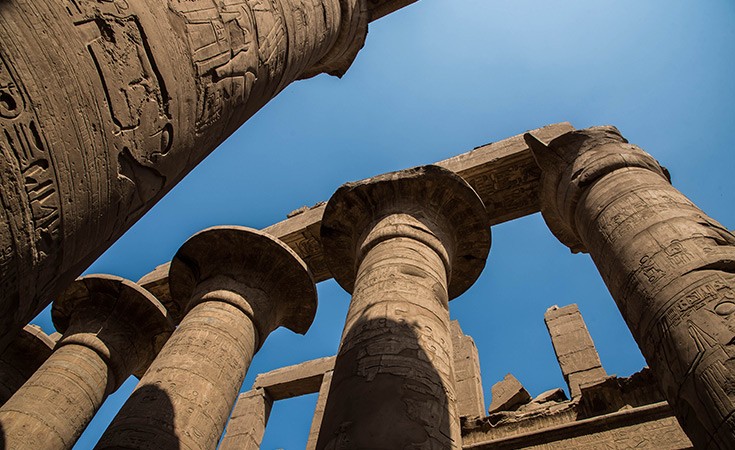
Karnak is a village in Upper Egypt located on the right bank of the Nile, about 2.5 kilometers northeast of Luxor. It is named after the northern half of the ruins of Thebes (circa 3200 BC), which is the largest ensemble of temples built during the pharaohs’ rule in Egypt. Temples in Karnak have been on the UNESCO World Heritage List since 1979.
The temple complex, expanded and changed many times, reflects the changing fortunes of the Egyptian Empire. Construction began in the 16th century BC. Approximately 30 pharaohs contributed to the construction of the temples. The main part of the temple (the Amun section) was erected during the eighteenth dynasty.
The temple consists of three parts, each divided by walls, dedicated to the gods:
Amun (central and the largest part of the temple, the only one open to visitors)
Montu (Theban god-warrior)
Mut (divine wife of the god Amun)
There is also the Temple of Athos and the Temple of Amenhotep IV (demolished after his death). Several alley sphinxes (with human or ram heads) connect Amon’s and Mut’s part of the temple with the temple in Luxor.
The temple in Karnak is famous for its 134 massive columns organized in 16 rows in the Pillar Hall. 122 pillars are 10m high and the remaining 12 pillars are 21m high, with a diameter of more than three meters. The architraves at the top of these columns weigh 70 tons. It is not yet known how the Egyptians lifted such heavy structures to this height.
A large hypostyle hall is one part of the temple which a mere photograph cannot do justice. It is simply impossible to understand the size and grandiosity of this room. The hall used to be enclosed, allowing light to softly enter through the densely placed pillars where the statues of the pharaohs stood. The whole scene was breathtaking.
Karnak not only represented the main place of worship of the Holy Trinity, but also the capital of pharaohs, as well as the center of government and Egyptian economy where over 10,000 workers were employed. This was the heart of the whole area, though only the priests and the royal family were allowed to enter its holy walls. The temple has as many as 10 monumental gates, separated by palaces and halls. The Pillar Hall was built by Pharaohs Seti I and Ramses II. This hall covers an area of 4,850 square meters.
This is an incredible example of ancient Egyptian architecture. Even today it is hard to imagine what kind of experience it was to build colossal monuments and temples such as the Karnak Temple. This is truly a must-see place when you are visiting Luxor.
 Ticket price for the Karnak Temple
Ticket price for the Karnak Temple
The regular ticket price is 150 EGP.
 Working hours of the Karnak Temple
Working hours of the Karnak Temple
The Karnak Temple is open every day from 6am to 5:30pm.